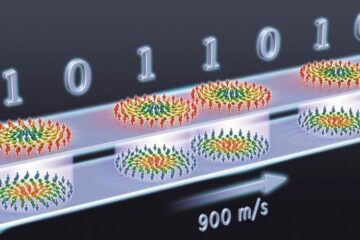Heidelberg Virologists Make HIV Luminate

A working group of virologists headed by Professor Hans-Georg Kräusslich at Heidelberg University Hospitals, jointly with Professor Hanswalter Zentgraf, Division of Applied Tumor Virology of the Deutsches Krebsforschungszentrum (German Cancer Research Center, DKFZ), have been the first to label Human Immunodeficiency Viruses (HIV) for visual investigations without inhibiting the functional characteristics of the virus. The labeling permits scientists to observe the behavior of the virus when it enters a host cell, during replication and when it leaves a cell. This is a major step towards understanding the process of HIV infection.
Modern imaging technologies facilitate real-time observation of virus-cell interactions. Many of these investigation methods require labeling of the object of interest, such as by introducing the genetic code of green fluorescent protein (GFP) into its genetic information. There the marker protein will be produced by the cellular machinery and appended to the desired site.
To observe the interaction of HIV with the host cell, there had also been attempts to label the virus with GFP. However, the genetic modifications impaired the formation of virus particles or their infectiousness, thus limiting the value of results obtained. A team of Heidelberg researchers of the university hospitals’ Virology Section and the DKFZ have now found an area within the structure molecule of the viral capsid that tolerates the substantial extension by GFP. Although the insertion of the GFP molecule enlarges the HIV structure protein by about one half, infectious viruses continue to be generated. Using electron microscopy, Zentgraf’s team was able to show that appearance and shape of the virus particles thus created cannot be distinguished from normal HIV. By simultaneous production of GFP-extended and normal structure protein, PD Dr. Barbara Müller was able to produce, under a fluorescence microscope, clearly visible HIVs with several thousand GFP molecules that were as infectious as HIV without GFP. This is an essential step towards a better understanding of the dynamics of HIV infection.
The task of the Deutsches Krebsforschungszentrum in Heidelberg (German Cancer Research Center, DKFZ) is to systematically investigate the mechanisms of cancer development and to identify cancer risk factors. The results of this basic research are expected to lead to new approaches in the prevention, diagnosis and treatment of cancer. The Center is financed to 90 percent by the Federal Ministry of Education and Research and to 10 percent by the State of Baden-Wuerttemberg. It is a member of the Helmholtz Association of National Research Centers (Helmholtz-Gemeinschaft Deutscher Forschungszentren e.V., HGF).
Media Contact
More Information:
http://www.dkfz.de/de/presse/pressemitteilungen/All latest news from the category: Life Sciences and Chemistry
Articles and reports from the Life Sciences and chemistry area deal with applied and basic research into modern biology, chemistry and human medicine.
Valuable information can be found on a range of life sciences fields including bacteriology, biochemistry, bionics, bioinformatics, biophysics, biotechnology, genetics, geobotany, human biology, marine biology, microbiology, molecular biology, cellular biology, zoology, bioinorganic chemistry, microchemistry and environmental chemistry.
Newest articles

Properties of new materials for microchips
… can now be measured well. Reseachers of Delft University of Technology demonstrated measuring performance properties of ultrathin silicon membranes. Making ever smaller and more powerful chips requires new ultrathin…

Floating solar’s potential
… to support sustainable development by addressing climate, water, and energy goals holistically. A new study published this week in Nature Energy raises the potential for floating solar photovoltaics (FPV)…

Skyrmions move at record speeds
… a step towards the computing of the future. An international research team led by scientists from the CNRS1 has discovered that the magnetic nanobubbles2 known as skyrmions can be…





















